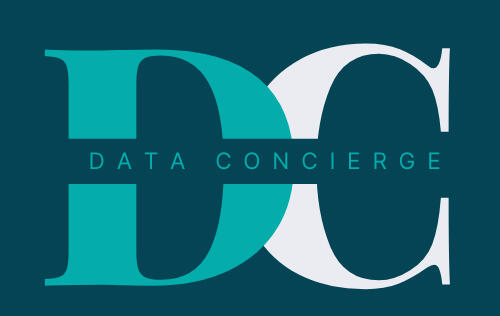- Data Concierge
- Posts
- Do You Trust Your Data to Make Important Business Decisions?
Do You Trust Your Data to Make Important Business Decisions?
How accurate should your data be?

Many executives say they don’t trust their data according to this survey here from Forbes in 2023. How accurate should your data be? There isn’t a universal answer. It depends on your specific use case. Let’s dive in.
Insight-Driven vs. Audit-Driven
Are you looking for a general trend or to verify the results of your data?
Is it insight-driven or audit-driven?
If you can’t answer this question, it’s fine because it can be both.
Embrace the world of messy data.
There is no easy data.
There are no perfect models.
Your dataset will never be comprehensive enough to make any universal inferences. However, that doesn’t mean you can’t use it to your advantage.
There are endless ways we can gain insights from various types of available data. Here are a few high-level categories to serve as examples for you to understand how accurate your data should be.
Insight-Driven Data and Projects
Commercial Transactional Data
Most business use cases are insight-driven to make sound business decisions. Yes, you have to be accurate to an extent, but being off by $500 out of the $5 million in total doesn’t affect anything.
The level of the accuracy of your data is totally at the discretion of your stakeholders. It’s crucial that you involve them early on in a project to see your results so they can do a gut check.
Don’t underestimate this simple step.
Data people aren’t usually skilled in a specific domain but mostly in analytics tools. You need that business context from them every single time. Even if you’re experienced in a domain, still involve them.
Data Science Projects
It’s safe to assume that this is mostly data-driven as well. The word “science” in data science doesn’t carry the same academic weight as in the business world.
In statistical genetics research, where statistical models have to be measured tightly within a reasonable range, or to a set of assumptions. The results can affect patients, drug discoveries, and treatment options.
However, data science in business doesn’t require the same rigorousness.
When data science uses statistics to infer results, you should explain to your stakeholders in simple and relative terms. Use an analogy whenever you can.
In this way, it also shows them that a model is just a model. With different data, you’ll see different results. Teach them how to interpret the data for business decisions.
Dos:
If we double down our marketing effort in the regions near central park, we might double our sales in our luxury line of jewelry according to our model using our current sales data.
Don’ts:
The P value of this model is 0.00007552. We have the right categorical variables. After a few rounds of testing, we found that the sales volume will be $2.4M if we increase our marketing effort in these zip code areas in New York City.
Just please use simple and relative terms. It’s also a form of insurance to protect your credibility.
Models and data are never going to be perfect. If you provide absolute answers, your stakeholders will demand absolute results. Why dig your own grave?
Audit-Driven Data and Projects
Financial and Insurance Claim Data
When you’re making a dashboard to show revenue using financial records, you need to match numbers to the penny. Although BI dashboards mostly show high-level totals, rounding and some discrepancies in FX rates can have a huge problem if you aren’t careful.
Insurance claims are the same. If your trend for claim volume was wrong, it could affect the premiums next year. This has both legal and political ramifications. Imagine poor senior citizens were forced to pay more premiums in Medicare.
The numbers have to be right. Triple check! In another article, I’ll share how to put down safeguards in analytical processes to ensure data accuracy.
Law Enforcement and Fraud Detection Projects
Having worked in fraud detection for Medicare, I learned the seriousness of data accuracy on all fronts. Your data will be used to indict people in court. Will proxy do it? No.
This field is serious about data quality check. You’ll have to have 2 others to check your work with managerial approval before anything goes out of the door. There are rigorous processes for every step of the data analysis you do.
If data science models are applied here, the models need to be on point. Correlation is not causation.
Both Insight-Driven and Audit-Driven Projects
When it’s a hybrid of both, the data accuracy becomes even more important.
You have to get it right. I remember redoing the whole analysis because I was a few cents off. Imagine you price Medicare Part D and your data science algorithm is incorrect by half of a percent. That’s huge in Part D. Premiums differ only by a few cents. It shows how competitive your pricing has to be.
Here is an example when a highly regulated data set is used in an insight-driven project.
You want to predict the % of genetic testing fraud next year in Medicare expenditure using the past 3 years of data.
It sounds like a good plan because you have 3 years of data. You can use a number of statistical models to find answers. However, pay close attention to what happened in the last 3 years in Medicare claim rules.
Has it become harder to get claims paid now since 3 years ago? Has the law enforcement taken out many labs doing genetic testing fraud during this time? Has the criminal switched focus to other kinds of fraud such as homecare, etc.?
Even if your model was of high accuracy, the real world wouldn’t work according to your prediction. Your model can’t predict political changes in the healthcare market.
Let’s say you got lucky, nothing has changed, and you found your answer. What would that answer be used for? Does that mean Medicare would reduce coverage on genetic testing in general to prevent potential fraud? What if people really need genetic testing?
Now you can see you’re playing Jenga with data. When you safely move one piece to the top, the other piece seems to fall off unexpectedly.
Be careful with the real-world applications of your findings.
How Can You Trust Your Data to Make Important Business Decisions?
As data professionals, you need to involve your stakeholders in the process of quality checks. The business context is crucial for trust and the level of accuracy needed.
Talk to your stakeholders in relative terms unless you’re looking to verify a specific value in an audit-like activity.
If you don’t know how to judge the quality and the results of the data, ask your stakeholders for help!
I’d always been a stakeholder doing technical things. Last year, I decided to leave the world of healthcare insurance claims and joined pharmaceutical manufacturing. The data in manufacturing is totally different from insurance claims.
For the first time, I felt completely lost in new types of data. I, alone, couldn’t make any sound judgment on financial records, which were the data we needed to render in Power BI.
How can you manage to not look like an idiot and still deliver projects?
Ask your stakeholders for help. Most of them never expect you to be a domain expert although it’s highly recommended by me.
They freely taught me about corporate finance, accounting terms, etc. I also self-studied in my free time to catch up. I may never have the “data” sense the stakeholders have. However, I gain the benefit of riding on their expertise to deliver projects and build trust through these mentoring relationships.
Stakeholders feel part of it, and you get to learn a lot about the field. What’s not to like?
What do you have to lose by asking for help?
Through working together, your stakeholders and you will regain your faith in your data and use it to make good business decisions.
Found a few things to fix. The book should be launched at the latest first week of July!
If you're interested in talking to me directly, I'm available on Clarity.fm:
I’d love to know how my experience has helped you and the problems you're facing now. Email me at: [email protected]
If you like me to
1) guest post on your platform,
2) provide copy writing service, and
3) help with data project management.
Feel free to book a discovery call via Calendly here.
Follow me on Twitter @MoJVillagran and send me a DM. And don’t forget to share this newsletter with your friends and colleagues.
I'm also on Medium. Read more here:
Join Medium membership and read more of my articles!
Medium does share membership earnings with writers like me. Appreciate the support!
I'm now available for podcast guest appearances! You can find all my details and get in touch to book interviews via this link below.
If you'd like to give better presentations at work and hone your public speaking skills, let Christopher transform you into star speakers.
|
|







Reply